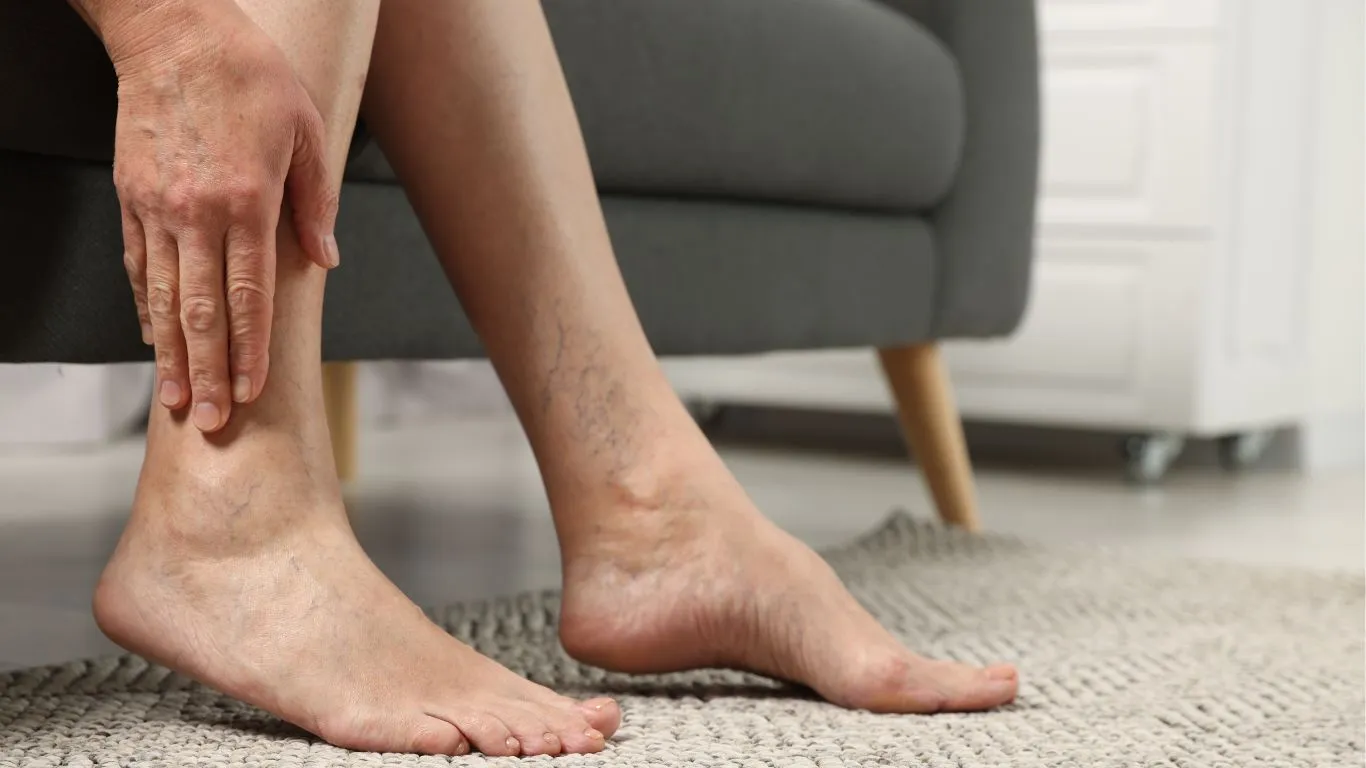
08 Sep Symptoms of Leg Artery Blockage
The condition causing blockage in the leg arteries is known as Peripheral Artery Disease (PAD). It involves partial or complete blockage of one or more arteries in the legs or arms, resulting in several symptoms due to reduced blood flow to the surrounding tissues at the site of the blockage. Often, the blockage is caused by arterial sclerosis in the area, which occurs when fats accumulate on the artery walls and gradually narrow them.
Dr. Amir Malkawi, a vascular surgery consultant, outlines a range of symptoms that may appear in individuals with leg artery blockage in the following article. He also addresses common questions regarding leg artery blockage.
Symptoms of Leg Artery Blockage
Symptoms of artery blockage typically begin with exertion beyond normal activities, such as walking for an extended period, running, or engaging in physical exercise. The person may notice the symptoms occurring after less exertion over time, progressing to advanced stages of the disease. Here are the detailed symptoms:
Early Symptoms of Leg Artery Blockage
There are several symptoms that appear as blood flow to the legs decreases, including:
- Pain during movement, especially when walking or climbing stairs, which subsides with rest. The pain is usually concentrated in the buttocks and thighs, and less commonly affects the calf muscles and feet.
- Pain, weakness, and discomfort in the legs.
- Feeling tired.
- Burning sensation.
- Tingling and numbness in the legs at rest.
- Paleness of the skin on the legs.
- Feeling cold when touching the legs.
Read Also: Peripheral Vascular Catheterization
Advanced Symptoms of Leg Artery Blockage
As artery blockage and reduced blood circulation worsen, they can reach a stage where the person experiences burning and tingling sensations in the legs and feet, or even in the toes, even at rest without exertion. Alongside these, other symptoms include:
- Leg cramps and pain during sleep.
- Shiny skin on the legs.
- Weak pulse in the feet.
- Slow toenail growth.
- Severe pain and tingling in the feet, to the extent that wearing clothes or placing bed sheets over the feet can be painful.
- Relief when dangling the legs off the bed edge, and increased pain when elevating them.
- Ulcer formation on the feet that do not heal over time.
- Paleness or a bluish color change in the skin.
- Hair loss on the legs.
- Noticeable coldness in the legs or in one leg compared to the other.
- Delayed wound healing in the legs.
- Erectile dysfunction issues.
Symptoms of leg artery blockage that warrant medical attention
Many people delay seeking medical attention for leg artery blockage symptoms, assuming they are simply a part of aging, which can exacerbate the problem. Therefore, regardless of age, any leg pain occurring with exertion should prompt a visit to the doctor to investigate the issue. Other cases that also require immediate medical attention include:
- Leg pain that persists even with rest.
- Inability to perform normal activities without experiencing pain.
- Severe infection development in one of the legs.
Frequently Asked Questions
Can leg artery blockage be cured?
Early detection of the disease significantly contributes to controlling it, as does following appropriate treatment and making healthy lifestyle changes to prevent disease progression or even improve symptoms in the affected person. However, these changes must be continued consistently, as complete recovery from leg artery blockage is not possible.
Do symptoms of leg artery blockage return after treatment?
Yes, symptoms of leg artery blockage can easily return if healthy habits that were followed or adherence to treating other health problems, such as diabetes and high blood pressure, are neglected.
Does artery blockage require surgery?
Yes, only severe cases of the disease may require surgical intervention to remove blocked arteries or redirect blood flow if it causes complications for the affected person. However, in many mild to moderate cases, medical treatment and lifestyle changes are sufficient to prevent disease progression.
References:
[1] – https://vispdocs.com/what-are-the-symptoms-of-a-blocked-artery-in-your-leg/
[2] – https://www.verywellhealth.com/peripheral-artery-disease-1746093
[3] – https://www.webmd.com/heart-disease/peripheral-artery-disease-of-the-legs
[4] – https://medlineplus.gov/ency/article/000170.htm
[5] – https://my.clevelandclinic.org/health/diseases/17357-peripheral-artery-disease-pad
[6] – https://www.nhs.uk/conditions/peripheral-arterial-disease-pad/
